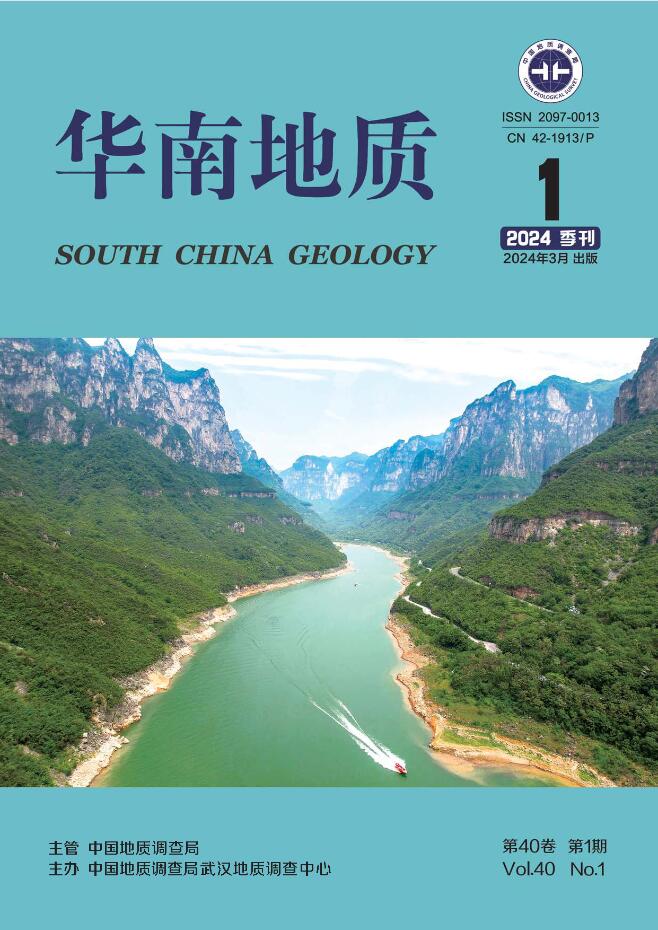| [1] |
邓辉,何政伟,陈晔,蔡宏,李璇琼.2014.信息量模型在山地环境地质灾害危险性评价中的应用——以四川泸定县为例[J].自然灾害学报,23(2):67-76.
Google Scholar
|
| [2] |
邓茂林,易庆林,韩蓓,周剑,李卓俊,张富灵.2019.长江三峡库区木鱼包滑坡地表变形规律分析[J].岩土力学,40(8):3145-3152+3166.
Google Scholar
|
| [3] |
冯谕,涂鹏飞,曾怀恩.2023.降雨及库水位共同作用下滑坡阶跃位移临界面的识别方法[J].岩石力学与工程学报,42(11):2789-2805.
Google Scholar
|
| [4] |
何钰铭,聂邦亮,侯时平,王金波.2023.秭归县1∶5万地质灾害调查风险普查报告[R].湖北省水文地质工程地质大队.
Google Scholar
|
| [5] |
黄润秋.2007.20 世纪以来中国的大型滑坡及其发生机制[J].岩石力学与工程学报,(3):433-454.
Google Scholar
|
| [6] |
赖波,赵风顺,江金进,江山,江宁,李俊生.2023.基于AHP-信息量法的珠海市地质灾害风险评价[J]. 华南地质,39(1):147-156.
Google Scholar
|
| [7] |
蓝健宁.2021.基于证据加权法的广西西大明山地区内生金属矿床成矿预测研究[D].桂林理工大学硕士学位论文.
Google Scholar
|
| [8] |
李明,蒋委君,董佳慧,金少锋,张宸伟,牛瑞卿.2023.基于机器学习的滑坡灾害易发性评价——以三峡库区为例[J].华南地质,39(3):413-427.
Google Scholar
|
| [9] |
李文彦,王喜乐.2020.频率比与信息量模型在黄土沟壑区滑坡易发性评价中的应用与比较[J].自然灾害学报,29(4):213-220.
Google Scholar
|
| [10] |
连志鹏,厉一宁,刘磊,王宁涛.2022.基于ArcGIS 的湖北省远安县地质灾害风险定量评价[J]. 华南地质,38(4):680-688.
Google Scholar
|
| [11] |
林淑珍.2013.RS 与三维GIS 在地质灾害调查中的应用[D].中国地质大学硕士学位论文.
Google Scholar
|
| [12] |
林孝松.2001.滑坡与降雨研究[J].地质灾害与环境保护,(3):1-7.凌炳,余敏.2015.滑坡灾害坡度坡向敏感性分析研究——以云南大关县为例[J].城市地质,10(3):66-68.
Google Scholar
|
| [13] |
刘康,田臣龙,徐凤琳.2023.基于信息量-层次分析耦合模型的泗水县地质灾害易发性评价[J].中国地质调查,10(2):77-86.
Google Scholar
|
| [14] |
刘林通,孟兴民,郭鹏,赵岩,熊木齐.2017.基于流域单元和信息量法的白龙江流域泥石流危险性评价[J].兰州大学学报(自然科学版),53(3):292-298+308.
Google Scholar
|
| [15] |
罗昌谟.2009.地质灾害与岩土体类型的关系探讨[J].福建地质,28(4):341-345.
Google Scholar
|
| [16] |
吕金林.2016.基于GIS 的隆乌古曲地质灾害危险性评价[D].西南科技大学硕士学位论文.
Google Scholar
|
| [17] |
马振,谭光超,季璇.2021.基于GIS 的信息量法在九畹溪流域地质灾害易发性评价中的应用[J].资源环境与工程,35(5):667-673+680.
Google Scholar
|
| [18] |
孙文怀,王舟.2012.滑坡稳定性的模糊综合评价[J].华北水利水电学院学报,33(4):86-89.
Google Scholar
|
| [19] |
陶伟.2021.基于RS 和ArcGIS 赣州寻乌滑坡地质灾害易发性评价[D].东华理工大学硕士学位论文.
Google Scholar
|
| [20] |
田乃满,兰恒星,伍宇明,李朗平.2020.人工神经网络和决策树模型在滑坡易发性分析中的性能对比[J].地球信息科学学报,22(12):2304-2316.
Google Scholar
|
| [21] |
王林.2021.白水江流域道路沿线落石灾害特征及风险分析[D].西南科技大学硕士学位论文.
Google Scholar
|
| [22] |
王大林.2021.基于改进支持向量机的山体滑坡预测算法研究[D].西南交通大学硕士学位论文.
Google Scholar
|
| [23] |
王佳佳,殷坤龙,肖莉丽.2014.基于GIS 和信息量的滑坡灾害易发性评价——以三峡库区万州区为例[J].岩石力学与工程学报,33(4):797-808.
Google Scholar
|
| [24] |
王志旺,李端有,王湘桂.2007.证据权法在滑坡危险度区划研究中的应用[J].岩土工程学报,(8):1268-1273.
Google Scholar
|
| [25] |
文静,吴彩燕.2017.基于GIS 的信息量模型的白沙河流域滑坡危险性评价[J].西南科技大学学报,32(2):61-65.
Google Scholar
|
| [26] |
吴森,李虎杰,张魁,陈国辉.2015.高程因素对平昌县滑坡灾害发育的敏感性分析[J].三峡大学学报(自然科学版),37(4):62-66.
Google Scholar
|
| [27] |
熊珅,易武,王力,余庆,邓永煌.2019.三峡库区八字门滑坡变形破坏机理分析[J].中国地质灾害与防治学报,30(5):9-18.
Google Scholar
|
| [28] |
杨顺,常晁瑜,李孝波,韩昕.2020.基于Logistic 回归模型的黄土斜坡地震稳定性快速评判方法[J].地震工程学报,42(2):512-516.
Google Scholar
|
| [29] |
杨少铭.1995.秭归县幅H-49-42-A1/5 万区域地质图说明书[R].湖北地矿局区调所.
Google Scholar
|
| [30] |
张梁,张建军.2000.地质灾害风险区划理论与方法[J].地质灾害与环境保护,(4):323-328.
Google Scholar
|
| [31] |
张钟远,徐世光,李超,管晓琪,李微,邓胜,郑笑秋.2022.基于GIS 和加权信息量模型的绿春县城地质灾害易发性评价[J].地质灾害与环境保护,33(1):37-43.
Google Scholar
|
| [32] |
章昱,王磊,伏永朋,刘亚磊,黄皓.2023.基于斜坡单元与信息量法的丹江口库区典型流域地质灾害易发性评价[J].华南地质,39(3):512-522.
Google Scholar
|
| [33] |
赵美龄,郝利娜,许晓露,陈辰,许强.2022.土地利用/覆被变化对地质灾害发育的影响研究[J].遥感技术与应用,37(2):399-407.
Google Scholar
|
| [34] |
Li L P, Lan H K, Guo C B, Zhang Y S, Li Q W, Wu Y M. 2017. A modified frequency ratio method for landslide susceptibility assessment[J]. Landslides, 14(2):727-741.
Google Scholar
|






 DownLoad:
DownLoad: